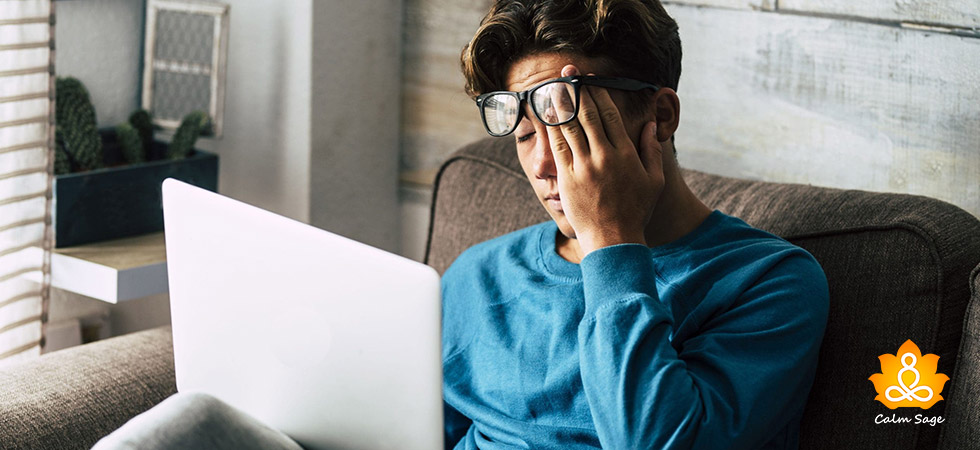When Anxiety Causes Paralysis: Why it Happens and How to Cope With It

Anxiety has become a constant companion in our lives and let’s face it; in the rhythm of life, we’ve experienced the feeling of “being stuck”, unable to move; either physically or emotionally, but stuck nonetheless. For many, these moments of being stuck can be a small hurdle, but for others, it can be more than just fleeting.
This, when it happens, is called anxiety paralysis, and is described as a state of being physically unable to move or continue functioning normally when severe anxiety occurs. It might not sound much, but anxiety paralysis can be distressing and is one of the most underestimated symptoms of anxiety.
Today, we’re taking a look at what anxiety paralysis is, what causes it, how it might impact your well-being and health, and how you can stop anxiety paralysis.
What is Anxiety Paralysis?
In simple terms, anxiety paralysis is when you feel physically frozen and unable to move when a fear or anxiety attack occurs. Imagine a scenario where a deadline is looming. You might find yourself frozen, unable to move and complete the tasks you’re supposed to do. This is anxiety paralysis.
This phenomenon can be like a mental hurdle, where your fear, worry, and anxiety are associated with a situation that prevents you from moving forward, quite literally. Anxiety paralysis can occur at work, in social interactions, or your relationships as well.
This might be a commonly overlooked symptom of anxiety, but anxiety paralysis can manifest itself to be powerful and distressing, holding you back from living your life happily.
What Causes Anxiety Paralysis?
To understand how anxiety paralysis happens, we need to understand the complexities of our minds. When I talk about it psychologically, I can trace the ties to the flight-fight-freeze response or the stress response, our instinct response to stress when we’re faced with a threat or danger — perceived or real.
When our brain and body are faced with a threat or danger, they go into stress mode, activating the sympathetic nervous system, wherein our bodies release stress hormones such as adrenaline and cortisol. This prepares us to either confront the fear, flee the situation, or freeze.
In the case of anxiety paralysis, our response is mostly “to freeze”, triggering an overwhelming sense of dread and unease that freezes us in our tracks and makes us unable to move, think, or even act.
More often than not, external stressors, traumatic events, or other factors can cause anxiety paralysis. Often fears such as perfectionism, fear of failure, and the need to feel approved can be the culprits in triggering anxiety paralysis.
Anxiety paralysis can manifest in different body parts, differently. Some ways it might manifest can include;
- Heaviness in arms
- Unable to walk
- Being weak in the knees
- Difficulty speaking
- Difficulty putting words together
- Unable to process information
- Unable to leave home
The Impact of Anxiety Paralysis
The impact of anxiety paralysis can go beyond the temporary physical paralysis. Chronic paralysis during anxiety attacks can eventually take a toll on your health and well-being. Constant stress can cause sleep issues, a weakened immune system, and heightened sensitivity to mental health issues such as depression.
This cycle where you’re constantly paralyzed by anxiety and depression can take a negative toll on your self-esteem and confidence, creating a barrier to your well-being and growth.
Anxiety paralysis can also make it harder for you to complete your day-to-day activities and interact with others in social situations. The constant fear of anxiety paralysis can cause anticipatory anxiety, contributing to a heightened sensitivity to anxiety and paralysis.
How to Stop Anxiety Paralysis?
So, how to manage; or better yet, stop anxiety paralysis? Here are some practical tips to stop anxiety paralysis;
1. Mindfulness Exercises
You can practice mindfulness exercises such as meditation, grounding techniques, and deep breathing to calm your anxiety and stay in the present moment. You can use techniques such as 5-4-3-2-1 grounding exercise, conscious breathing, or mindfulness meditation to signal your body that no immediate threat is present.
2. Create a Support System
You can also create a support system with whom you can share your struggles. This support system can be of your friends, family members, or therapists. Talk about your experiences with experts as they can offer valuable insights, perspective, and support.
3. Be Self-Compassionate
Make sure you treat yourself with the same kindness and compassion you would a loved one. Know that it’s OK to face challenges and that perfection is unrealistic. You don’t have to push yourself; just be kind to yourself.
4. Move Your Body
Did you know that animals can “shake it off” after pretending to be frozen to avoid being prey? You can do this too! You can incorporate this practice with physical activity and movements such as dancing, shaking your body, doing yoga, or other gentle movement exercises. This can help activate the parasympathetic nervous response and release endorphins.
5. Seek Therapy
You can also reach out for therapy to explore what triggers your anxiety and anxiety paralysis. With professional guidance, you can build distress tolerance and heal your mental wounds.
Wrapping Up…
Anxiety paralysis is a distressing experience but knowing what triggers it and what happens when anxiety occurs to paralyze you, can help you take effective measures to manage it and even stop anxiety paralysis. Acknowledge the impact of anxiety paralysis on your health, understand its causes, and use the aforementioned tips to manage anxiety paralysis. Doing this can help you live a happy and fully functioning life.
You are not alone! With self-compassion, self-awareness, and a bit of patience, you can break free from the stillness of anxiety paralysis. Don’t forget to reach out for help if you need it; help is always a button away!
I hope this blog helped you understand what anxiety paralysis is and how to stop it. Let me know what you think about this article in the comments below.
Take Care!




















